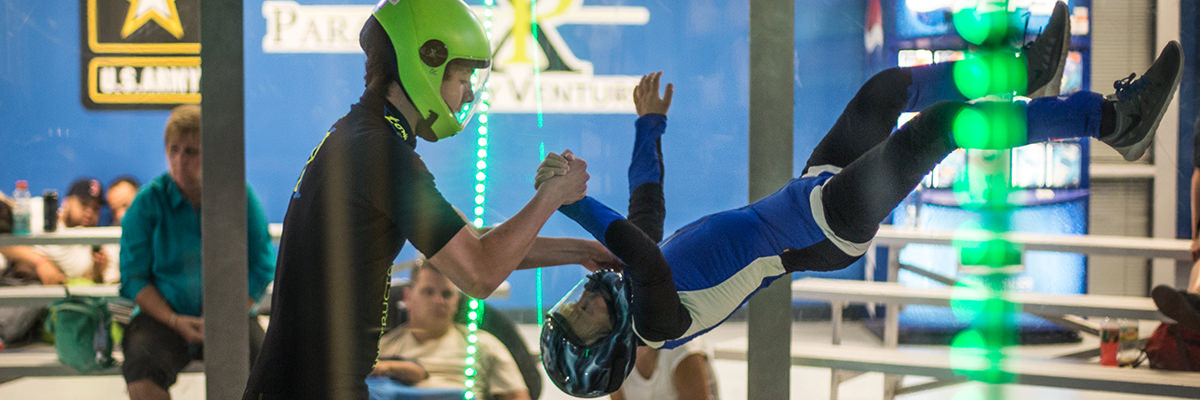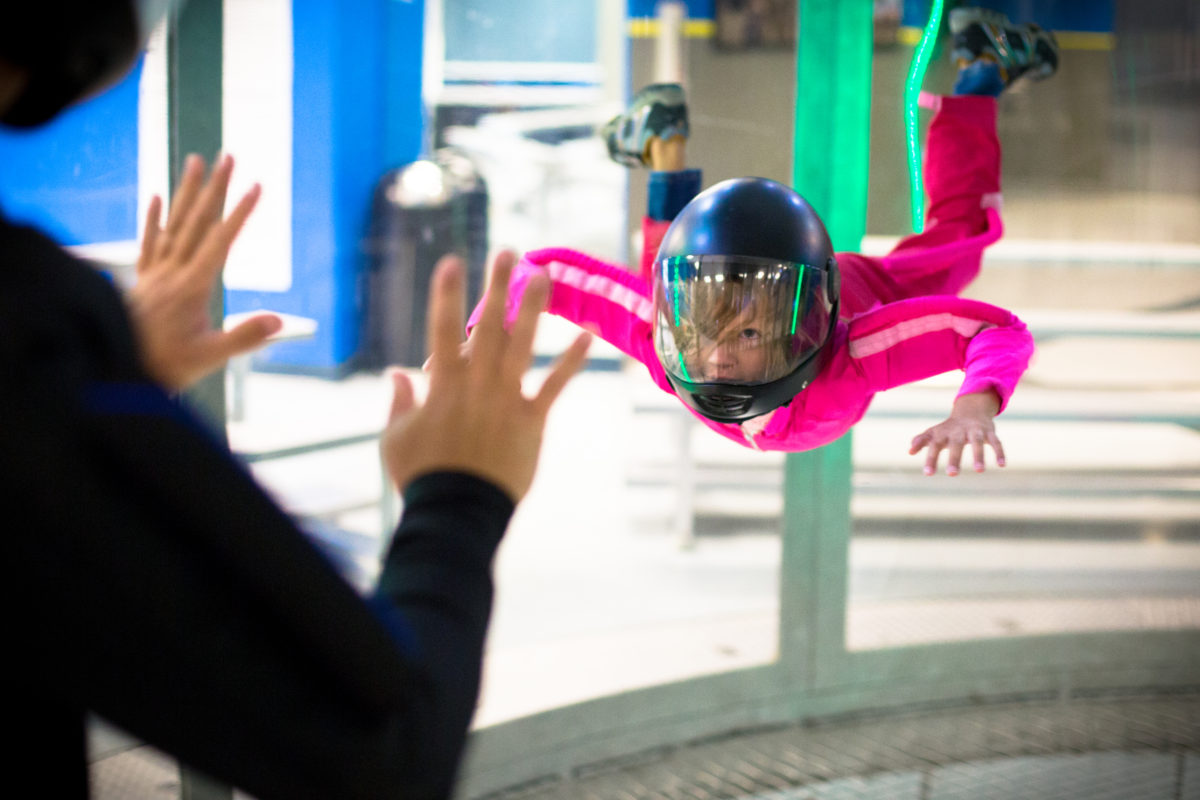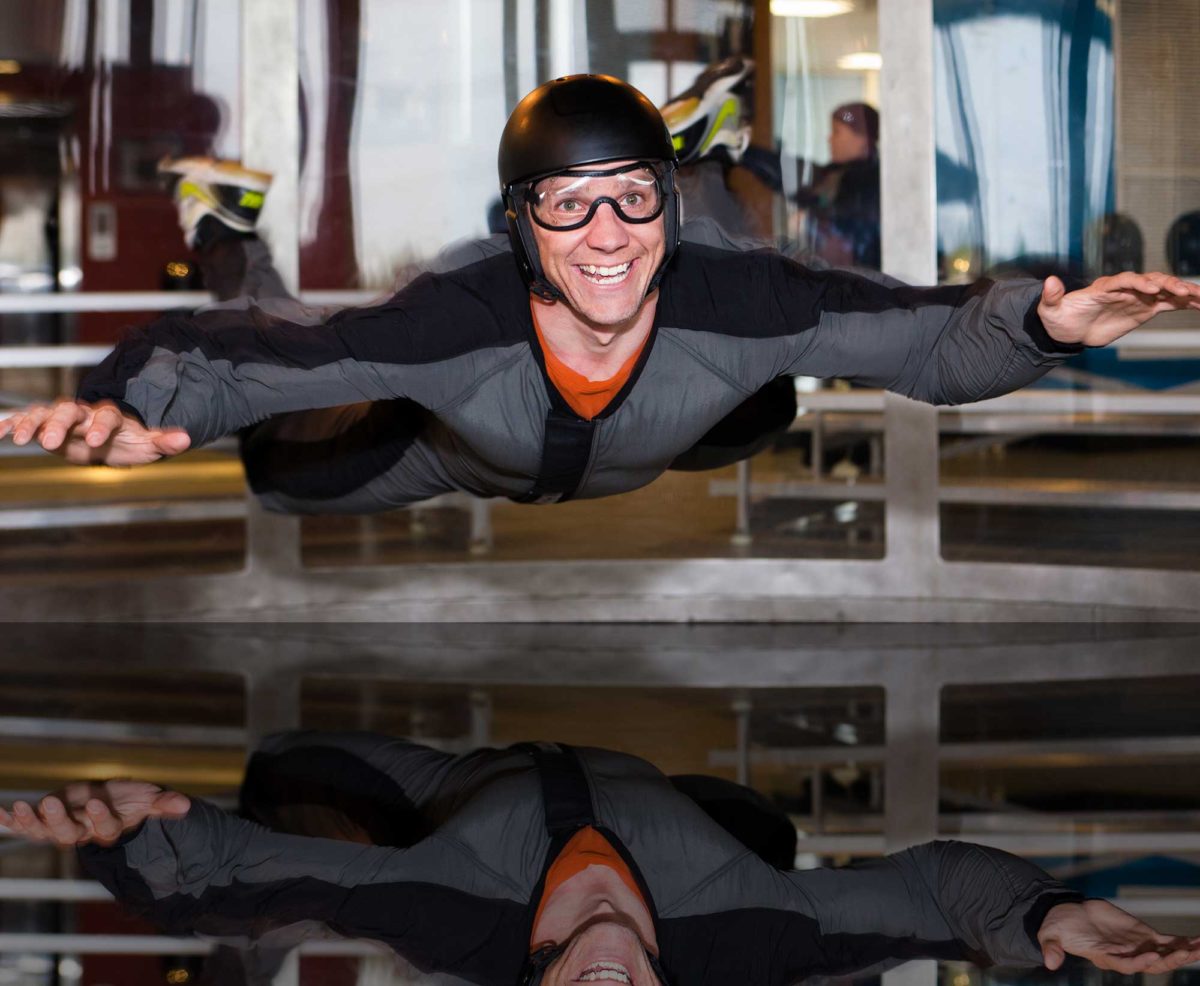
What Is Indoor Skydiving?
Tuesday, March 5, 2019
- Team XP
- 3/05/19
- 0
- Indoor Skydiving
Skydiving indoors? C’mon now. Everybody knows that’s not possible. …Or is it? As a matter of fact, though the name makes us blink with barefaced incredulity, the idea of creating a skydiving simulator that fits under a roof is now, very officially, a thing — no parachute required. It’s certainly nothing close to the real thing, either in emotional power or thrill, but it is definitely a fun way to while away an afternoon. Here’s what you need to know about flying the tubular skies.
How Can You Skydive Indoors?
You can’t skydive indoors. You need a sky to skydive. You can, however, fly your body in a column of air indoors, and that’s just what “indoor skydiving” aims to do. “Indoor skydiving” happens in a vertical wind tunnel, through which air is pushed by giant fans at freefall speeds. Wind tunnels come in a variety of shapes and sizes, from 12 feet up to more than 17 feet in diameter. (The bigger the wind tunnel, the more people can fit inside it — which is not important for first-time flyers, but quite a boon for training skydiving teams.) The tunnel “driver” can turn the airflow up or down, depending on the needs of the coach/instructor/student/combination thereof inside.
The sport and activity of “indoor skydiving” has experienced a huge bump in facilities and practitioners in the last handful of years in recent years, many of whom are dedicated skydiving athletes who appreciate the weather-independent opportunity to train fine motor skills. That said: What was once a training tool just for skydivers has become an exciting day out for anyone over the age of two.

Who Can Go “Indoor Skydiving”?
That’s the best part — where skydiving in the real-live sky is strictly limited to adult practitioners, “indoor skydiving” is not. Most indoor skydiving facilities will welcome students over the age of two years — up to an including centenarians! — who are physically fit to fly. Paraplegics and other mobility-limited folks are welcome to participate.
The procedure is simple. To kick things off, you’ll start with a first-timer flight, where an experienced instructor will hold on to sturdy handles on your suit and keep you stable. After a few minutes of flying, you’ll be accustomed to the air, so you’ll be able to try maneuvers like turns and level changes on your own. (Kids and grandparents are on equal footing here!)
How Does It Compare To Skydiving Outdoors?
To talk about “indoor skydiving” in descriptive terms like “skydiving simulator” does both a disservice. Honestly, “indoor skydiving” is as much like “outdoor skydiving” as a flight simulator is like flying a plane. It’s a great tool for training and quite a bit of fun, but it’s not the same thing at all.

Here’s the facts, Jack: flying in the wind tunnel is very much its own thing. It’s exciting for very different reasons than skydiving is exciting. It’s absolutely a thrill, it’s fully progressive, it’s immersive, it’s delightful and it’s addictive beyond reason — but it’s not simulated skydiving. It’s its own thing that deserves to be celebrated for its own merits.
The only solution to this not-really-a-problem is simple: Do what we do. Do plenty of both! Flying your body is a triumph in any kind of air, and you owe it to yourself to experience both kinds of windy revelation. Make your indoor skydiving reservation today!

Thanks so much for a wonderful first time adventure for me and my 5 year old great-niece; and also my 2nd timer niece. I felt very safe and informed through the whole process. My only wish is that we had ParacleteXP in Minnesota-with you to guide us! Thanks again for a wonderful time. We will DEFINITELY be back next time when in NC.
Ellen Adams
Copyright © 2025, Paraclete XP Indoor Skydiving, All Rights Reserved.
DropZone Web Design & Marketing by Beyond Marketing, LLC